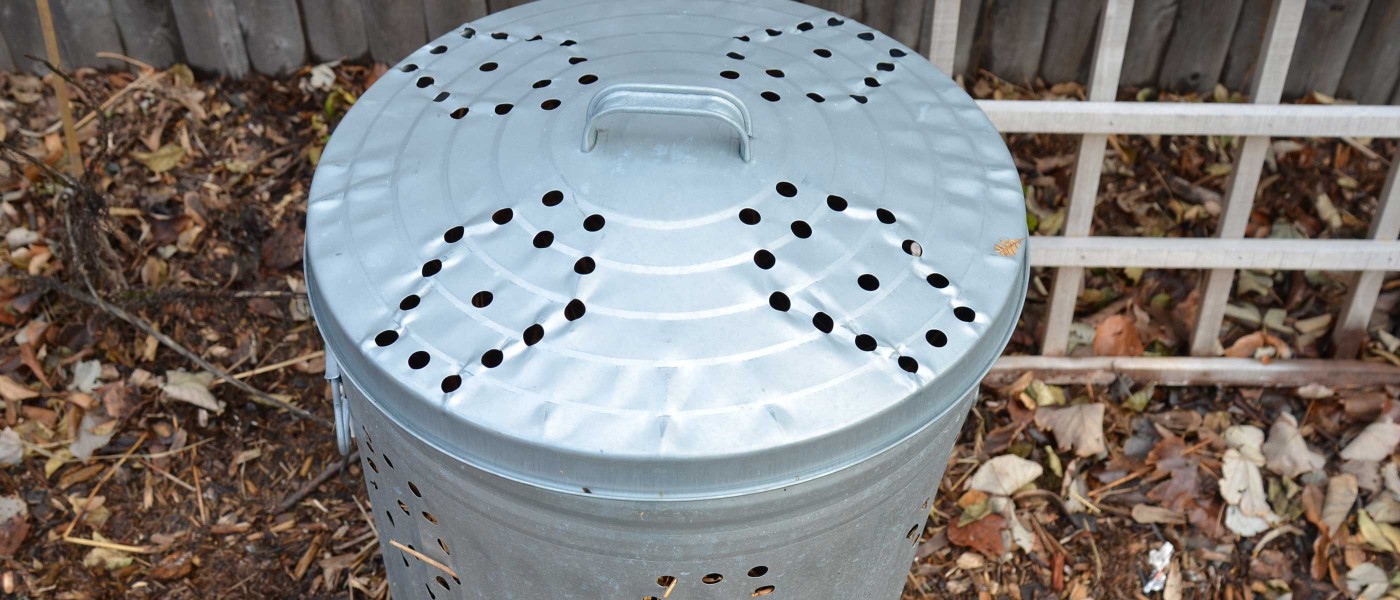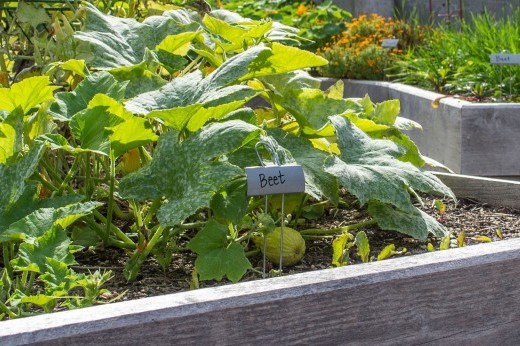If you live in an urban area, you should contain your compost in a bin that deters rodents and other pests. Choose a bin based on the space you have available for composting, the materials you want to compost, your budget, and the amount of time you want to spend tending your pile. Here are five basic types of compost bin:
Slatted Wooden Bin
Pros Nice looking, convenientCons Can be expensive, eventually deteriorates, may require rodent proofing
Best Uses Multichamber models for community gardens, small ones for backyards
This is basically a wooden box with side slats spaced for ventilation. Many versions feature doors or removable slats to make it easier to turn and remove the compost, and some designs include dividers for holding two or three separate batches at once. Some are open; others come with lids. Many designs incorporate metal mesh or hardware cloth to allow good airflow while keeping out rats and mice. (It’s also possible to retrofit a basic bin to fortify it against pests.)
Modified Trash Can
Pros Compact, secure, inexpensive, easy to createCons Limited capacity, easily mistaken for garbage can, difficult to harvest compost
Best Uses Small urban gardens, patios, rooftops
An easy way to make your own compost bin is to drill holes (a quarter to half inch across) in the bottom, sides, and lid of an ordinary metal or plastic trash can. The holes allow for air circulation and drainage; the snug-fitting lid deters hungry animals; and you can easily turn your pile by turning the bin on its side and rolling it. Use a bungee cord to help secure the lid if needed. This compact container is a great choice for composters with limited space.
Tumbler
Pros Convenient, compact, rodent resistantCons Can be difficult to turn and access; often expensive
Best Uses Rooftops, urban backyards
These fully enclosed, rotating bins are designed to make turning the compost easier and keep out pests. They also have the added advantage of being relatively tidy and hold in moisture, a plus for composting on rooftops, which tend to be hotter and drier than the ground. Common tumbler models are drum-shaped bins that spin on a base covered with little rollers, but there are also orb-shaped versions that you turn by rolling around the yard. Some work well and others don’t. Be sure the composter you choose is convenient to load and unload and easy to turn—wet compost is heavy.
Bottom-Access Plastic Bin
Pros Convenient, compact, moderately pricedCons Less attractive than other bins
Best Uses Backyards, apartment building courtyards, small school gardens
Some bin models are designed with a sliding drawer at the base to make it easy to access the finished compost. The Soilsaver Classic Composter (triformis.com; $95) and Garden Gourmet (gardengourmet.com; $76) are two popular examples. Both are compact (about 11 cubic feet), easy to fill, have lids to keep rodents and excess moisture out, provide good aeration, and are made from 100 percent recycled materials.
Adjustable Mesh or Wire Bin
Pros Inexpensive, easy to access, adjustableCons Not rodent resistant
Best Uses Holding leaves until your main pile needs browns
One of the most basic and inexpensive bins you can buy consists of an open-ended cylinder of rugged plastic netting. The sides of the bin are adjustable, so the overall volume can be increased or decreased to suit the amount of organic materials available. This lightweight bin usually needs to be staked to the ground to keep it in place. Simple DIY versions can be created with chicken wire and wooden stakes. Since this type of bin is open and unprotected, it’s not a good choice for composting kitchen scraps in urban areas.



